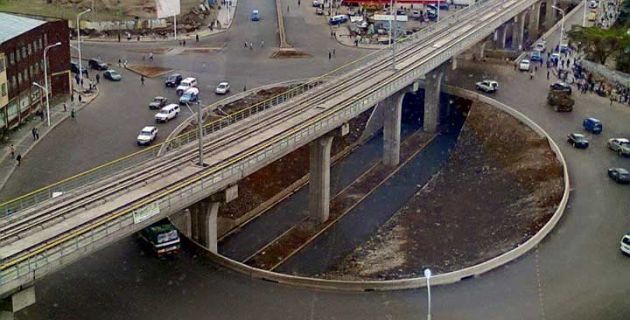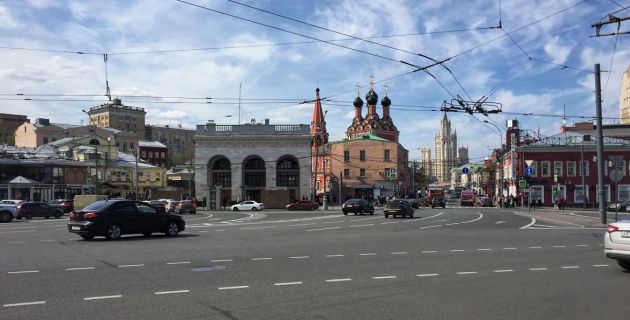There’s no doubt that autonomous cars are the way of the future.
With the potential to create an economy worth up to $7 trillion, the technology has been an obsession for most automakers and nearly half the firms in Silicon Valley for the last few years.
But while many of those companies love touting their upcoming “self-driving” and “semi-autonomous” releases, in reality the systems still have a long way to go. Progress is undoubtedly made on the venture every day, but, as of now, the machines must still take a backseat to their human counterparts.
Still, as biological organisms, our driving days are certainly numbered, and once the self-piloting rides get the hang of the skill, they’ll boast a number of advantages over us.
For example, unlike the humans they’ll replace behind the wheel, self-driving cars won’t need to pass an exam to earn their driving rights.
Yet, as lovers of all things standardized, we here at DMV.ORG modestly propose a replacement of the standard driving assessment for self-driving cars: seeing if they can master these 7 insane roads from around the world, which truly test the capabilities of any driver, whether they be human or cyborg.
Magic Roundabout, Swindon, England
The road may be magic, but its designers were almost certainly dabbling in the dark arts.
Notorious across the country as one of the scariest roads in England, the junction is comprised of 5 miniature traffic circles, which all make their way around a sixth traffic circle, making the whole thing just a few roundabouts short from Dante’s 9 traffic circles of hell.
Adding to the insanity is the fact that each of the sections can be driven in a clockwise or counter-clockwise direction.
And while drivers can get caught up in the loop for hours on end, the self-driving cars of the future should be expected to get it right the first time around.
Fairy Meadows Road, Pakistan
Here, another mystical name helps hide another terrifying truth: This road is absolutely bonkers. (And exceptionally dangerous.)
The completely unmaintained gravel road snakes 6 miles up a sheer precipice, guardrail-free, with the potential fall on the other side lasting as much as 10,826 feet. And oh, did we mention it’s just about the width of a standard Jeep Wrangler, despite often functioning as a 2-lane thoroughfare?
Traveling across the route in a self-driving ride would be like flirting with the ultimate in trust fall technology. It’s a good thing self-driving cars don’t suffer from vertigo—though, on this road, we can’t say the same for their human passengers.
Meskel Square, Addis Ababa, Ethiopia

Located in Ethiopia’s largest city, this junction is one of its largest intersections. The convergence of roads is only missing one key thing: any semblance of traffic direction.
Meskel Square is something of a community space for the African capitol, hosting any number of public gatherings. And perhaps that’s why the area is completely devoid of any traffic lights, road markings, or signs that could otherwise help inform confused motorists.
Still, it seems that the people of Ethiopia have gotten navigation of the area down to a science. But much (much, much) more science will likely be needed before the same can be said for their self-driving counterparts.
Winston Churchill Avenue, Gibraltar
Space is a bit of an issue for this tiny British territory, but the area has become adept at efficiency planning.
Case in point: This aptly-named thoroughfare, which connects the territory to southern Spain, also intersects the runway for Gibraltar’s international airport.
Still, it’s not totally insane. When a plane is en route, motorists and pedestrians are alerted by both flesh-and-blood authority figures and an ear-shattering alarm, giving them several moments to get out of the way.
But last year alone, the terminal handled nearly 5,000 flights, which works out to about 14 per day—and also makes for at least 14 daily times that the people of Gibraltar may want to think twice about crossing the road in a self-driving car.
Place Charles De Gaulle, Paris, France
This elegant circular avenue in the heart of Paris may be just as famous as it is famously impossible to drive.
The dizzying intersection is something of a great, curving river, feeding off the tributaries of 12 other avenues that terminate there. And the whole thing swirls around the country’s iconic Arc de Triomphe, causing any amount of rubbernecking and otherwise awestruck driving maneuvers, which are further responsible for holding up traffic.
To be fair, when the route was designed some 150 years ago, auto mechanic navigation wasn’t exactly a top concern. But if the self-driving cars of the future can nail the tricky intersection, that would really be a triomphe.
Taganskaya Square, Moscow, Russia

This tangled-up intersection reads as if it were designed by the spaghetti monster.
One of Moscow’s most notoriously chaotic junctions, the square is actually much more of an oval—or somewhat oblong shape, where so many smaller streets converge it’s hard to keep count. (Making things even more complicated is the fact that most of those “smaller” streets are actually comprised of 6 lanes.)
Even the best of human drivers need a map to successfully get where they want to go on the first try—and even with all their mapping technology prowess, it’s going to take the best of autonomous drivers to do the same.
Hanshin Expressway, Osaka, Japan
Leave it to Japan to truly think outside of the box—and inside of the building.
This highway—which inexplicably got the green light for construction in 1992, when people should’ve known better—runs directly through an office building. And not the ground floor of the building, either. Or even just one floor of the building.
The road ramps up three entire floors, supposedly because when it was designed, there was some ongoing property dispute in the area. And somehow, building a highway through a building was agreed on as the best solution to that problem.
Yet for all their infinite intelligence, autonomous cars may have their own dispute with the concept, as the vehicles are specifically designed to avoid driving into buildings—something this road less traveled simply does not offer an option around.